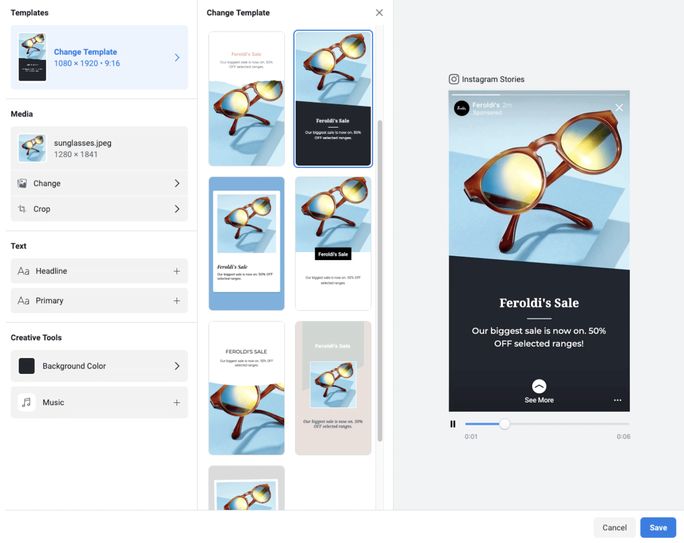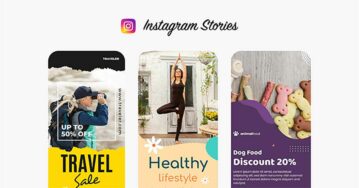Stories are the future content of social media.
Don’t believe us?
Here’s what Mark Zuckerberg stated in 2018,
“Stories are a huge part of the future of video content and sharing. This is the reason we’re all in with it across our networks.”
The consumption of stories has increased by a whopping 842% since 2016.
From Snapchat to LinkedIn, stories have been adopted by most of the top social media platforms, if not all. And Stories on Facebook is also the result of the boom.
Facebook Stories are being used by over 500 million people daily.
It is a great feature for brands to boost their engagement rate and drive desired business outcomes.
If you have just created a Facebook business page and are wondering how to use stories to notch up your creative content strategy, we’ve got you covered.
This guide sheds light on how to use Stories, how to master the art of story creation on Facebook, and more.
Timing is everything
for a story.
Post your Facebook Stories with SocialPilot
at the perfect time and make them matter.
What Is a Facebook Story?
Only someone who has been living under a rock would ask, “what is a Facebook Story?” Still, we’ll give you the basic definition.
Facebook Stories are fleeting videos or images that can engage the viewer with their different elements. It has an immersive and visual appeal that helps attract audiences towards a brand.
Being a new addition to Facebook’s arsenal, it has a greater impact and reach if you compare it to other content forms on Facebook.
But Stories don’t last on your Facebook page as long as you want, compared to other forms of content posts on Facebook.
So, how long do Facebook Stories last?
Great question. Like any other stories on different social media platforms, Stories on Facebook disappear within 24 hours. However, a viewer can take a screenshot or view it in the highlights after 24 hours.
They are visible right above Facebook’s feed both in the mobile app and desktop version. You can also post and view a Facebook Story on the Messenger platform.
With the changing user behavior, the viewers’ attention is decreasing, and stories are a great way to spread a brand’s message concisely and crisply.
But how long are Stories supposed to be?
Let’s understand what the default length and size are.
1. Facebook Stories Length
The core idea behind Stories is to attract the user’s attention throughout the viewing experience. More attention from the user makes it easier for a business to channel the audience towards taking a specific action or express the message more effectively.
A single-story card has a default video length of 20 seconds, and it is reduced to 5 seconds for images. Your Facebook Story ad will also last up to 15 seconds.
If your content exceeds the limits, then Facebook will automatically bifurcate the content length into multiple story cards for a better viewing experience.
A viewer can tap around your story to switch the story cards whenever they want to. Or they can swipe up or click any CTA on your story to jump onto your desired location.
2. Facebook Stories Size
Before you get to know just how to create a Story on FB, you need to know some important details. Ideally, Stories on Facebook are compatible with all smartphones to fit the entire screen. The resolution is at least 1080×1080 pixels for both video and image content. If we talk about aspect ratios, then 9:16 and 1.91:1 both are supported.
If you want to place a Facebook Story ad, then logo and text placement are highly important. You need to leave 250 pixels or 14% space from the top and bottom of story visuals.
You can limit the text length of your story when you are about to place an advertisement. Check all the vital measures to ensure that your ad gets approved the first time.
Now that we are clear with the basics, let’s jump onto the actual use and implementation of Facebook for your business.
How to Use Facebook Stories?
When it comes to Stories, you have two options to use this amazing feature. You can either schedule them using a third-party tool or post them regularly by yourself. You can also go with inorganic methods like Facebook Ads.
In both scenarios, you need to be effective and uniquely represent your brand image. You need to highlight your product and services in a way that people get allured to experiencing them.
You can also be a little informal with your stories compared to any other content format on Facebook to add an extra element to make the audience glued to your stories.
Also, if a user views a lot of your stories, your stories will be ranked in the initial phase of the story queue, making it easier for your brand to solidify your brand presence.
Stories can also be used to ask what the users think about any topic. You can also add polls to keep your audience engaged with your brand regularly.
Now the question arises: how to create engaging and impactful stories for your brand?
Let’s check out the simple steps.
How to Create Stories on Facebook?
Before creating Stories for your business page, you need to have an editor or admin access to post a Facebook Story.
To use the ‘Story’ feature in the Facebook customization tab, follow these steps:
Step 1: Access the Story Feature
When you are in the Facebook customization tab, look for the options ‘Post’, ‘Reel’, and ‘Story’.
Select the ‘Story’ option to proceed with creating a Facebook story.
Step 2: Utilize Available Options in Story Mode
Once you switch to the ‘Story’ option, note that the text editor box will be disabled.
You will have access to the following options:
- Add Media: Choose to upload your own media files.
- Design on Canva: Use Canva for creative designs and export to SocialPilot Content Library.
- Add Media from External Sources: Import media from other online platforms.
- Add Post from Library: Select previously saved or created content from your library.
Step 3: Selecting Media for Your Story
You can choose an image or video for your story from various sources, such as:
- Your device’s file system.
- Cloud storage services like Google Drive, Box, or Dropbox.
- External sources through an integrated media option.
- Understanding Media File Selection for Stories:
After selecting a media file under the ‘Story’ option, you will see a label stating:
“Facebook pages support the publishing of stories (single image or video) without captions.”
This is to remind you that Facebook stories are published without text captions.
Step 4: Editing Images for the Story
In the ‘Story’ option, you can edit your selected images using the available image editor. Look for the image editor icon on the selected image and use it to make necessary edits.
By following these steps, you can effectively create and customize stories for your Facebook page using the new features in the Facebook customization tab.
Tips & Tricks for Facebook Stories
1. Go Vertical
As most of the audience who view your story use their devices vertically, try to create or choose a vertical story content.
Approximately 90% of the audience hold their phones vertical while viewing Stories.
It will be easy for the viewer to see the content without making any tweaks to their devices.
2. Create a Content Calendar
Being a business page, you need to provide and engage with your audience consistently. So try to plan out your next 6 months’ story content beforehand.
Create a content calendar and brainstorm different story ideas so that you can set a consistent flow of content and even polish your content afterward.
Planning your content will help you save time and energy every time you post a story. You don’t need to work from scratch if you have created your story ideas.
Facebook doesn’t provide you with a content calendar tool, but you can use advanced third-party tools like SocialPilot to create and maintain your social media content calendar.
3. Effective Use of Templates
Create your brand’s unique design to represent your tone and image. Use a consistent template for your posts so that people can recognize your brand from that template.
You also can use your customized templates in your ads which you can run across Facebook networks. It will save you all the designing time and also set a consistent rhythm to your posts.

4. Make Use of Captions
Sometimes, you might have a video message, but not everyone has turned on their sound audio; you need to grab their attention before tapping on towards the next story.
Adding captions gives a brief detail about what the viewer can expect from the story.
You can add text descriptions to your image stories to create an impact and convey the message you want.
5. The Powerful CTA
You can add specific links to your landing pages, websites, or other social media handles to channel your audience via Stories.
You can also add any available CTA like Contact Us, Shop Now, Sign Up, Subscribe to achieve your desired business outcome.
Follow these tips to boost up the effectiveness of your Stories and to extract the desired outcomes.
Conclusion
Facebook Stories are a quick and effective way to attract an audience to your brand. You can add stories to your marketing campaign and strengthen your approach towards achieving your desired business goals.
Use all the learnings from our guide and implement them to stand apart from the rest of your competitors.
If you need to solidify your overall Facebook campaign, then you can make use of SocialPilot to handle your content scheduling, publishing and analytics.
It’s not limited to Facebook. In fact, you can boost your social media presence as SocialPilot can be used for all the top social media platforms.
Still, thinking?
Try out its free 14-day trial to experience the best of social media management.



